sing-box是一个通用代理平台,对标v2ray-core,有很多新的特性,具体可看这里:
https://sing-box.sagernet.org/zh/features/
这里记录下配置过程,主要是trojan相关的配置,我使用了nginx的ngx_stream_ssl_preread模块进行sni分流。
首先安装sing-box,你可以选择下载预构建好的二进制文件:
https://github.com/SagerNet/sing-box/releases
也可以自行构建,自己构建的话可以支持更多功能,比如ACME、QUIC这些,具体支持的构建标志可看这里:
https://sing-box.sagernet.org/zh/
由于我后续的配置用到了ACME这个功能,所以这里采用自行构建的方式来安装。首先安装构建需要用到的依赖:
apt -y update apt -y install curl git build-essential libssl-dev libevent-dev zlib1g-dev gcc-mingw-w64
安装golang:
curl -L https://go.dev/dl/go1.19.1.linux-amd64.tar.gz -o go1.19.1.linux-amd64.tar.gz tar -C /usr/local -xzf go1.19.1.linux-amd64.tar.gz echo 'export PATH=$PATH:/usr/local/go/bin' > /etc/profile.d/golang.sh source /etc/profile.d/golang.sh
这里我编译一个1.1-beta6全功能版本,如果不需要某些功能比如tor自己去掉相关的构建标志即可:
go install -v -tags \ with_quic,\ with_grpc,\ with_wireguard,\ with_shadowsocksr,\ with_ech,with_utls,\ with_acme,\ with_clash_api,\ with_gvisor,\ with_embedded_tor,\ with_lwip \ github.com/sagernet/sing-box/cmd/sing-box@v1.1-beta6
交叉编译出windows平台可用的二进制文件:
env GOOS=windows GOARCH=amd64 CGO_ENABLED=1 CC=x86_64-w64-mingw32-gcc \ go install -v -tags \ with_quic,\ with_grpc,\ with_wireguard,\ with_shadowsocksr,\ with_ech,with_utls,\ with_acme,\ with_clash_api,\ with_gvisor,\ with_lwip \ github.com/sagernet/sing-box/cmd/sing-box@v1.1-beta6
复制编译好的文件:
cp $(go env GOPATH)/bin/sing-box /usr/local/bin/
新建sing-box需要用到的目录:
mkdir -p /usr/local/etc/sing-box
新建systemd服务:
nano /etc/systemd/system/sing-box.service
写入如下配置:
[Unit] Description=sing-box service Documentation=https://sing-box.sagernet.org After=network.target nss-lookup.target [Service] CapabilityBoundingSet=CAP_NET_ADMIN CAP_NET_BIND_SERVICE AmbientCapabilities=CAP_NET_ADMIN CAP_NET_BIND_SERVICE ExecStart=/usr/local/bin/sing-box run -c /usr/local/etc/sing-box/config.json Restart=on-failure RestartSec=1800s LimitNOFILE=infinity [Install] WantedBy=multi-user.target
新建sing-box的配置文件:
nano /usr/local/etc/sing-box/config.json
trojan协议的配置:
{
"log": {
"level": "info"
},
"inbounds": [
{
"type": "trojan",
"tag": "trojan-in",
"listen": "127.0.0.1",
"listen_port": 52000,
"tcp_fast_open": true,
"udp_fragment": true,
"sniff": true,
"sniff_override_destination": false,
"udp_timeout": 300,
"proxy_protocol": true,
"proxy_protocol_accept_no_header": false,
"users": [
{
"name": "imlala",
"password": "password"
}
],
"tls": {
"enabled": true,
"server_name": "sing-box.example.com",
"alpn": [
"http/1.1"
],
"min_version": "1.2",
"max_version": "1.3",
"certificate_path": "",
"key_path": "",
"acme": {
"domain": ["sing-box.example.com"],
"data_directory": "/usr/local/etc/sing-box",
"default_server_name": "",
"email": "imlala@example.com",
"provider": "letsencrypt"
}
},
"fallback": {
"server": "127.0.0.1",
"server_port": 23333
}
}
],
"outbounds": [
{
"type": "direct",
"tag": "direct"
}
]
}
hysteria协议的配置:
{
"log": {
"level": "info"
},
"inbounds": [
{
"type": "hysteria",
"tag": "hysteria-in",
"listen": "::",
"listen_port": 52001,
"tcp_fast_open": false,
"udp_fragment": true,
"sniff": true,
"sniff_override_destination": false,
"proxy_protocol": false,
"proxy_protocol_accept_no_header": false,
"up_mbps": 500,
"down_mbps": 500,
"auth_str": "password",
"max_conn_client": 2048,
"disable_mtu_discovery": false,
"tls": {
"enabled": true,
"server_name": "hysteria.example.com",
"alpn": [
"h3"
],
"min_version": "1.2",
"max_version": "1.3",
"certificate_path": "",
"key_path": "",
"acme": {
"domain": ["hysteria.example.com"],
"data_directory": "/usr/local/etc/sing-box",
"default_server_name": "",
"email": "imlala@example.com",
"provider": "letsencrypt"
}
}
}
],
"outbounds": [
{
"type": "direct",
"tag": "direct"
}
]
}
实际上你可以把trojan和hysteria的配置写在一个配置文件内,只是我个人并不使用hysteria,这里关于hysteria的配置是某位网友让我帮忙水个教程的,所以我单独列出来。另外由于hysteria的特性,肯定也是不支持用nginx做sni分流的。
接下来安装一个nginx:
apt -y install nginx
如果你服务器内的nginx已经在运行了,请先停止运行,务必将80、443端口空出来留给sing-box的acme使用:
systemctl stop nginx
检查你的配置是否正确:
sing-box check -c /usr/local/etc/sing-box/config.json
启动sing-box并设置开机自启:
systemctl enable --now sing-box
确保sing-box的服务正常工作:
systemctl status sing-box
如图所示:
接下来编辑nginx的主配置文件:
nano /etc/nginx/nginx.conf
写入如下配置,用于sni分流,注意这里启用了proxy_protocol:
stream {
map $ssl_preread_server_name $singbox {
sing-box.example.com trojan;
wordpress.example.com wordpress;
typecho.example.com typecho;
}
upstream trojan {
server 127.0.0.1:52000; # trojan协议的端口
}
upstream wordpress {
server 127.0.0.1:52100; # 你的第一个网站的ssl端口
}
upstream typecho {
server 127.0.0.1:52200; # 你的第二个网站的ssl端口
}
server {
listen 443 reuseport;
listen [::]:443 reuseport;
proxy_pass $singbox;
ssl_preread on;
proxy_protocol on;
}
}
接下来简单搭建一个回落站点,随便搞个静态页面都可以,这里我就用这个小游戏好了:
cd /var/www/html git clone https://github.com/tusenpo/FlappyFrog.git flappyfrog
新建一个nginx站点配置文件,用于回落站点:
nano /etc/nginx/conf.d/fallback.conf
写入如下配置:
server {
listen 80;
server_name sing-box.example.com;
if ($host = sing-box.example.com) {
return 301 https://$host$request_uri;
}
return 404;
}
server {
listen 127.0.0.1:23333;
server_name sing-box.example.com;
index index.html;
root /var/www/html/flappyfrog;
}
注:
虽然sing-box的trojan协议支持proxy_protocol,但是sing-box的fallback目前不支持proxy_protocol,所以回落站点就不能配置接收proxy_protocol。
这也意味着目前回落站点无法获取到访客真实ip。期待sing-box加入类似xray-core的xver功能。
你的其他站点是可以配置接收proxy_protocol的,一个示例配置:
set_real_ip_from 127.0.0.1;
real_ip_header proxy_protocol;
server {
listen 80;
server_name wordpress.example.com;
if ($host = wordpress.example.com) {
return 301 https://$host$request_uri;
}
return 404;
}
server {
listen 127.0.0.1:52100 ssl proxy_protocol;
server_name wordpress.example.com;
index index.html index.php;
root /var/www/wordpress;
ssl_certificate ...;
ssl_certificate_key ...;
...
}
检查nginx配置是否正确:
nginx -t
配置无误后,启动nginx:
systemctl start nginx
服务端的配置到此就完成了,接下来是客户端的配置。
我这里使用的是windows,之前在linux上交叉编译了windows的二进制文件,所以下载到本地就可以用了。
trojan客户端的配置:
{
"log": {
"level": "info",
"timestamp": true
},
"dns": {
"servers": [
{
"tag": "cloudflare",
"address": "https://1.1.1.1/dns-query"
},
{
"tag": "china",
"address": "local",
"detour": "direct"
}
],
"rules": [
{
"domain": "sing-box.example.com",
"geosite": "cn",
"server": "china"
}
],
"disable_cache": true,
"disable_expire": true
},
"inbounds": [
{
"type": "mixed",
"tag": "mixed-in",
"listen": "::",
"listen_port": 20080,
"sniff": true,
"set_system_proxy": true
}
],
"outbounds": [
{
"type": "trojan",
"tag": "trojan-out",
"server": "sing-box.example.com",
"server_port": 443,
"password": "password",
"tls": {
"enabled": true,
"disable_sni": false,
"server_name": "sing-box.example.com",
"insecure": false,
"alpn": [
"http/1.1"
]
},
"multiplex": {
"enabled": true,
"protocol": "smux",
"max_connections": 5,
"min_streams": 4,
"max_streams": 0
},
"connect_timeout": "5s",
"tcp_fast_open": true,
"udp_fragment": true
},
{
"type": "direct",
"tag": "direct"
},
{
"type": "block",
"tag": "block"
}
],
"route": {
"rules": [
{
"geosite": "cn",
"geoip": "cn",
"outbound": "direct"
},
{
"geosite": "category-ads-all",
"outbound": "block"
}
]
}
}
hysteria客户端配置:
{
"log": {
"level": "info",
"timestamp": true
},
"dns": {
"servers": [
{
"tag": "cloudflare",
"address": "https://1.1.1.1/dns-query"
},
{
"tag": "china",
"address": "local",
"detour": "direct"
}
],
"rules": [
{
"domain": "hysteria.example.com",
"geosite": "cn",
"server": "china"
}
],
"disable_cache": true,
"disable_expire": true
},
"inbounds": [
{
"type": "mixed",
"tag": "mixed-in",
"listen": "::",
"listen_port": 20080,
"sniff": true,
"set_system_proxy": true
}
],
"outbounds": [
{
"type": "hysteria",
"tag": "hysteria-out",
"server": "hysteria.example.com",
"server_port": 52001,
"up_mbps": 20,
"down_mbps": 100,
"auth_str": "password",
"disable_mtu_discovery": false,
"tls": {
"enabled": true,
"disable_sni": false,
"server_name": "hysteria.example.com",
"insecure": false,
"alpn": [
"h3"
]
},
"connect_timeout": "5s",
"tcp_fast_open": false,
"udp_fragment": true
},
{
"type": "direct",
"tag": "direct"
},
{
"type": "block",
"tag": "block"
}
],
"route": {
"rules": [
{
"geosite": "cn",
"geoip": "cn",
"outbound": "direct"
},
{
"geosite": "category-ads-all",
"outbound": "block"
}
]
}
}
打开终端运行sing-box客户端:
cd C:\Users\LALA\Desktop\sing-box .\sing-box.exe run -c config.json
gui客户端目前还没有很好的支持,v2rayN的pre-release刚刚支持添加sing-box的自定义配置:
https://github.com/2dust/v2rayN/releases/tag/5.36
如果你使用v2rayN,务必将sing-box的设置系统代理改为false,这与v2rayN的设置系统代理会产生冲突:
"set_system_proxy": false
我测试了一下,目前v2rayN对sing-box的自定义配置支持有很多问题,甚至不能正常工作。目前不推荐用v2rayN运行sing-box。
 荒岛
荒岛
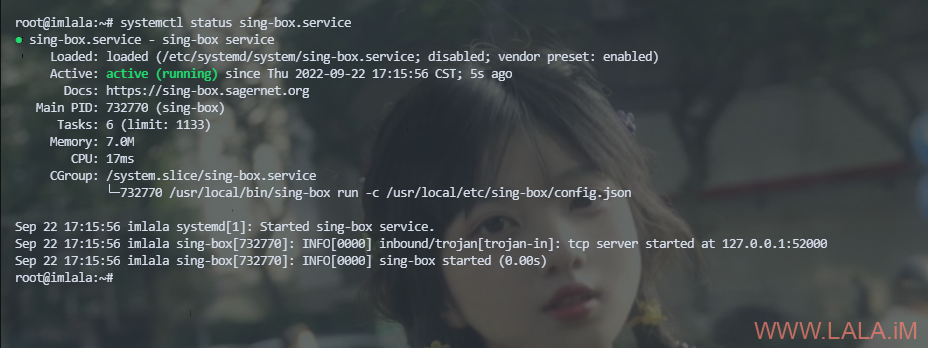



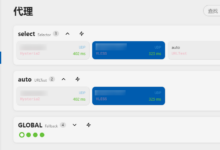
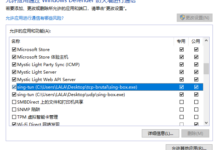
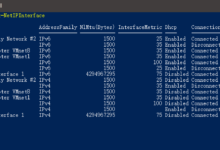
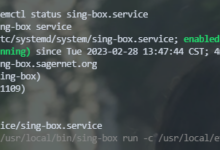




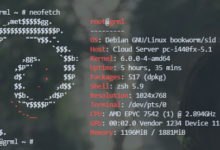


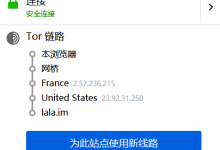
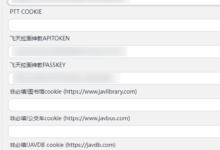

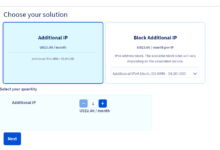

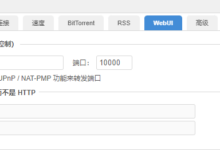
感谢你的分享!!!
https://github.com/MatsuriDayo/nekoray 这个项目支持sing-box的vpn模式及sing-box的内核模式,感觉上比v2rayN要更原生地支持sing-box,而且有windows版及linux桌面版
可以的,我待会装一个用用看。
哪些参数是要替换成自己服务器的呢?
sing-box和nginx里面的域名改成你自己的,再就是sing-box里面的acme邮箱地址,其他的不需要修改。
有两种 gRPC 实现,所以不加 with_grpc tag 也是可以用 gRPC 的,而且性能可能会更好
2个客户端的配置放在一个config文件中有可能吗?是不是需要listen两个端口地址了?
貌似现在最新版的sing-box不支持入站trojan填写:
“proxy_protocol”: true,
“proxy_protocol_accept_no_header”: false,
nginx中的配置好像也不能直接反代。用stream的话暂时没有弄出来。